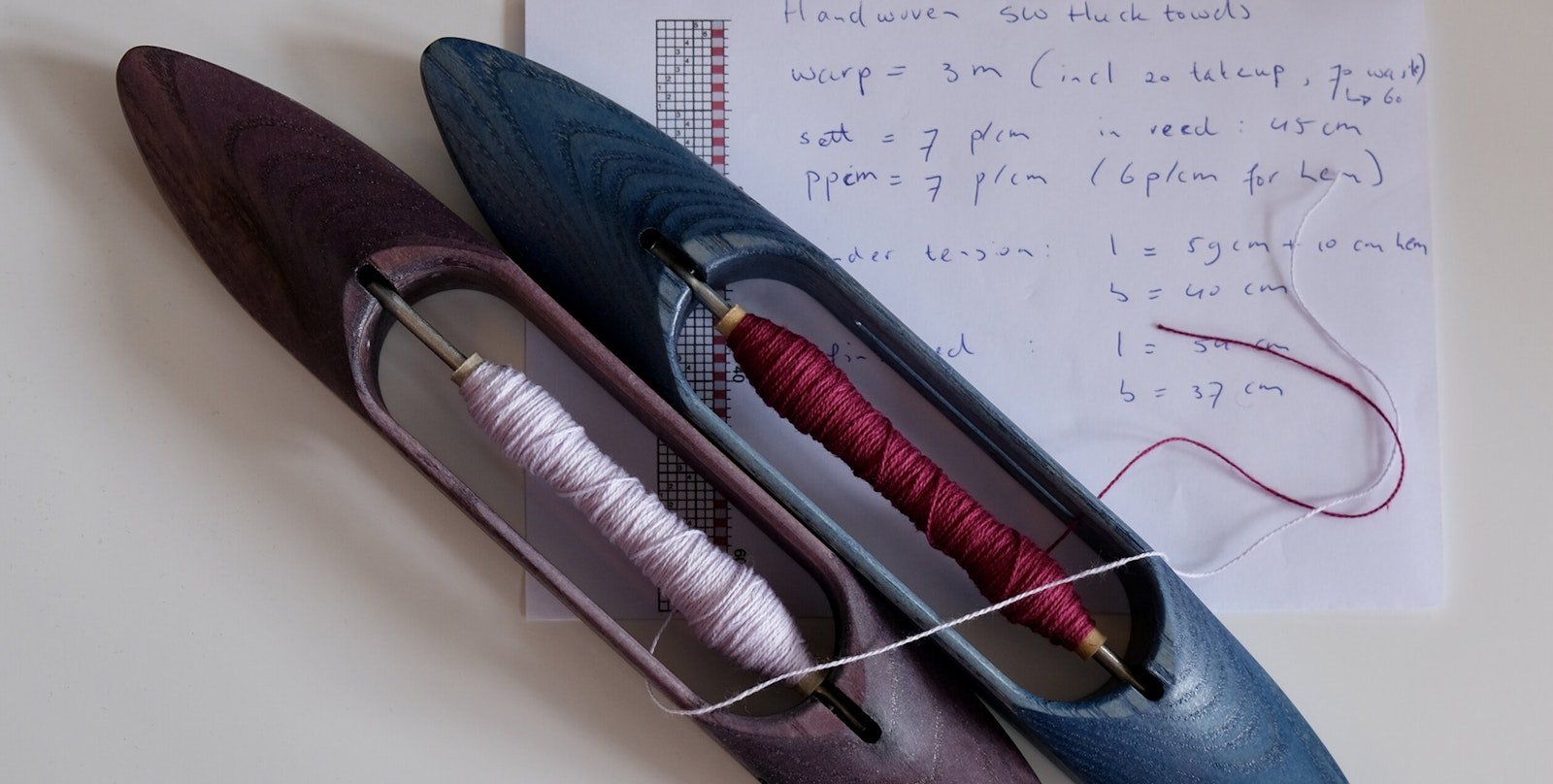In my previous two posts, I talked about my process of shaping my designs and project ideas for Handwoven or Little Looms. In this post, I want to share how I approach weaving and, most importantly, documenting those projects.
The key to successful submissions lies in notetaking, but taking notes while weaving doesn’t come naturally to me. I want to submerge myself in the weaving experience without the distraction of pen and paper. As a consequence, I have some regrets about lots of projects I’ve woven in the past with only sketchy notes. With a project still on my loom, I fool myself into thinking I am going to remember the sett and the ppi, and of course, this is never the case. For personal projects, this is a frustrating inconvenience, but for projects that I am submitting for publication, the absence of notetaking is problematic. Those projects are published for other weavers to use as a pattern, so careful notetaking is a must.
My solution to the challenge of combining notetaking with weaving is making the notetaking as easy on myself as possible. In actual practice, this means scribbling on the piece of paper nearest to me while weaving—the paper containing the treadling sequence that I adhere to the front of my loom. I allow a certain degree of disorderliness in my notetaking. As long as my notes are readable and complete, I am satisfied. They may not win a beauty contest, but my scribbles get the job done.
In order to have complete notes, I make sure to take note of all the details required in the Handwoven or Little Looms project paperwork. My rule is to write down each weaving detail as soon as it is available. This helps me avoid situations where I’ve forgotten to take note of something until it is impossible to measure or check its value. I start with noting down the number of warp ends per color and the warp length while winding the warp. Within my warping notes, I include estimates of take-up and loom waste. Once I have dressed my loom and woven a few inches, I write down a number of specifications: the number of warp ends and weft picks I wrapped during hemstitching, the warp sett (epi) and reed sleying pattern, and the width of the warp in the reed. This is also a good time to take first measurements of the woven width under tension and the number of picks per inch (ppi).
As the weaving progresses, I keep adding measurements to my notes. For multi-colored projects, such as my Delft Blue napkins from Handwoven, September/October 2020, I keep a list of all the weft colors I have used per item. An important specification to measure before taking the project off the loom is the woven length under tension. If I am weaving towels or napkins, I measure the woven length per item. In the case of a shawl or scarf, I usually measure the woven length of one or more pattern repeats under tension. I also recheck my earlier measurements of the woven width under tension and my ppi.

Delft Blue Napkins. Photo by Matt Graves
When the weaving is done but the project is still on the loom, I take the time to check my notes for completeness. Once I am sure that I’ve recorded all of the pertinent information, I can safely remove the project from the loom and take some final measurements while finishing. I measure the loom waste before cutting it off, and I note the dimensions of the project before and after wet-finishing. Depending on the type of project, I may take some additional notes. For Handwoven, January/February 2021, I made the Among The Stars pillows. While sewing these pillowcases, I took notes of the sewing steps involved and details such as seam allowance and zipper length.

Among the Stars Pillows. Photo by Matt Graves
The final step I take in documenting a project, is to collect everything that I used for the project. This includes not only my notes, but also yarn wrappers and yarn leftovers. The wrappers include all the information I need to know about the yarn composition and color codes, while the yarn leftovers allow for a double check of the yarn amounts used. Together with a WIF of the design, I have everything I need to make the project reproducible and can start working on the “official” project paperwork.
Notetaking might not be a hobby to me, but I find that it minimally distracts from the fun of weaving when approached in this simple and practical manner. After the entire journey from design idea to final project, it is so much fun to see the final article and the beautiful accompanying pictures in the magazine. This makes weaving for Handwoven and Little Looms one of the most rewarding weaving-related activities I can think of.

